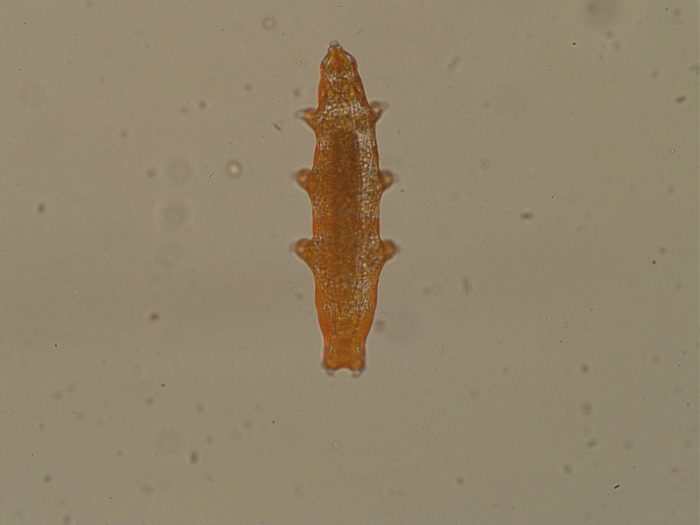Ever since tardigrades, a.k.a. water bears, became known to us, we've been fascinated by them.
The funny vacuum-cleaner mouth.
The chubby air-bag body.
The creepy-yet-cute eight legs with deer antlers for toes.
But mostly, it's been their indestructibility.
Because from boiling water, to radiation, to deep freezes, to years of drought — even outer space! — nothing seems to kill water bears. They just live on and on, using an extreme hibernation state called a tun to withstand the harshest conditions.
But according to a recent study, a weakness has been found. Extreme heat.
Staying in 'tun'
Before we get into that, let's revisit just how these creatures — which measure around half a millimetre (0.02 inches) long — can survive so much adversity.
In their animated (or living) state, tardigrades need to be covered by a film of water. (Turns out the nickname 'water bears' isn't just someone being cute!) Even in this state, they are resistant to all kinds of forces that would kill other creatures. And when no water is around, they get even tougher.
This is when hibernate by literally drying out and retracting their heads and legs back into their body. Yes, now they can't move or do anything. But while in this bean-shaped 'tun', tardigrades can sit and wait for years until some water arrives to reanimate them — like an old sponge being dunked into a bucket.
A matter of time

In this microscopic picture, a tardigrade has been magnified 40 times. (© Ivanmattioli - Dreamstime.com)
While in this tun state, cold and drought have no effect. But extreme heat? If it's hot enough, it can be a killer.
But wait, I thought these animals could be boiled? What's a little heat to an animal that can live in soup?
This is true, but when it comes to heat and water bears it's all about time. As in the time spent in it.
Over a 24-hour period, even a consistent temperature of over 37°C (98°F) can be deadly to an active tardigrade. There are temperatures far greater than that in many parts of the world, though the conditions may not be sustained over a full 24 hours, as things cool down at night.
A tun-state water bear can stand up to far greater heat, but even it has limits. The study says that 50 percent of hibernating tardigrades will die after 24 hours at 63.1°C (145°F).
Still the champs
To which tardigrades have every right to say, "Yeah? Well, we'd like to see you try living like that!"
Which is fair. Most humans couldn't survive one hour at 63°C, never mind 24 hours. In the end, the study proves one thing: that while tardigrades can be killed, they remain the most resilient species this planet has ever seen.
 Indestructible? Not quite. But pretty close! (© Anna Lopatina - Dreamstime.com)
Indestructible? Not quite. But pretty close! (© Anna Lopatina - Dreamstime.com)










Of COURSE water bears have weaknesses! I mean, EVERYONE knows that God NEVER created a single living thing that’s 100% indestructible like HE is! By the way, wonder what else can kill a water bear?
However, nothing else can kill it. And we should appreciated such a habitable animal. 😀 🙄
However, there is one thing that can kill it. It is a black hole. It will destroy a tadigrade even before it reaches the event horizon. It will be ripped to pieces. 😆
so wired
Yeah it is wierd. I’ve never seen such an amazing animal.
Literally anything that just wants to eat it. Tardigrades can barely move, and have no defence against other creatures. They’re immune to everything except the things that could actually harm them
No. Unfortunately not. Tadigrades can survive really harsh conditions under ‘tun’. First case is that it will be to hard for animals to see such a small creature. Second, even if there is a predator with sharp hunting skills, the tadigrade will probably become even more tough. It will survive the entire digesting process and when the animal excretes, the tadigrade will come out alive. It can mostly survive all the harsh temperatures on the planet. 😀 😀 😀
It also has no top of chain predator. No animal consider it as prey.